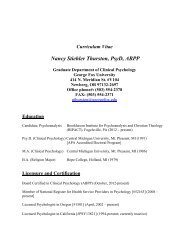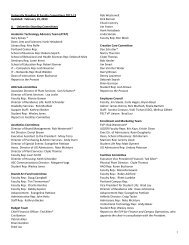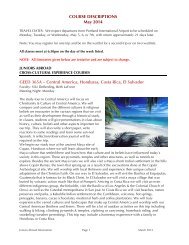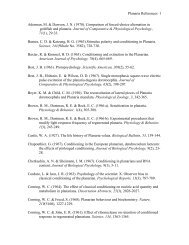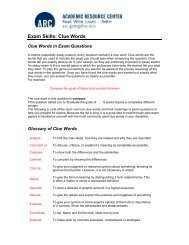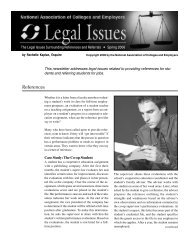JNM-ECA Series JNM-ECX Series JNM-ECS Series - George Fox ...
JNM-ECA Series JNM-ECX Series JNM-ECS Series - George Fox ...
JNM-ECA Series JNM-ECX Series JNM-ECS Series - George Fox ...
Create successful ePaper yourself
Turn your PDF publications into a flip-book with our unique Google optimized e-Paper software.
1 RELAXATION TIME MEASUREMENT<br />
1.1 RELAXATION TIME MEASUREMENT<br />
There are three kinds of relaxation times, T 1 , T 1ρ , and T 2.<br />
Section 1.1 explains the method of T 1 measurement, which is frequently performed.<br />
1.1.1 Relaxation Time (T 1 ) Evaluation<br />
To obtain T 1 with high accuracy, array measurement is performed using the variable of<br />
recovery times. To set the variable of recovery times to appropriate values, the<br />
approximate T 1 of the sample must be determined first.<br />
This section describes the method of a simple T 1 evaluation by means of inversion<br />
recovery.<br />
■ Simple T 1 evaluation method using T 1 measurement mode by means of<br />
inversion recovery<br />
If a peak changes as a single exponential function, the observed magnetization M(τ) is<br />
expressed as a function of the relaxation delay time τ by using the inversion recovery<br />
method:<br />
M (τ) = M 0 {1-2exp(-τ/ T 1 )}<br />
From this equation it is found that T 1 can be evaluated from the delay time when the<br />
observed magnetization becomes zero. This delay time is called the null point, and is<br />
represented by τ null .<br />
Thus, T 1 is given by<br />
T 1 = τ null / ln2 = 1.44 × τ null<br />
To obtain an accurate value of T 1 , first obtain the null point, and then perform the array<br />
measurement .<br />
NM<strong>ECA</strong>/<strong>ECX</strong>-USA-3 1-1





